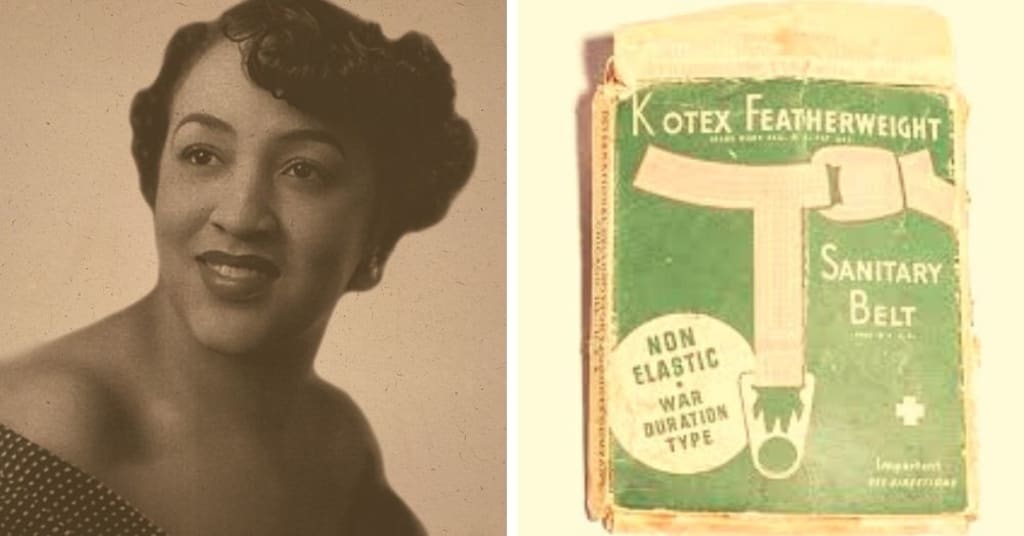Mary Beatrice Davidson Kenner-First person to make sanitary pads
Mary Beatrice Davidson Kenner-First person to make sanitary pads

Mary Beatrice Davidson Kenner (17 May 1912 - 13- January 2006) was an African-American inventor known for promoting the artificial sanitary belt, but due to racism, her patent for this invention was withheld for more than three decades. . Kenner was born on May 17, 1912, in Monroe, North Carolina to a family of black founders. He and his sisters Mildred Davidson and Austin Smith were born in Charlotte, South Carolina, four years before their young founder who sold board games, and Sidney's son Nathaniel Davidson, who approved several products during his lifetime including stretchers and mobile ambulances.
Sidney's father Nathaniel Davidson (founder) was unknown to the public, and his mother's father was unknown to the public, but he had a sister, his sister Mildred Davidson Austin Smith. As professionals, she and her sister grew up with the patent for their family board games. Like their maternal grandfather, who invented the tricolor light signal to guide trains, they grew up copying and selling their board games.
Inspired by her sister Mildred Davidson's multiple sclerosis, she founded and patented the feed tray for disabled pedestrians in 1976. Mary Beatrice Davidson Kenner was inducted into the Discoveries World Hall of Fame as an African-American woman who founded the Sanitary Belt, the first of its kind to contain napkins and bags that protect against moisture. Kenner not only developed sanitary pads despite some misunderstandings about her invention but is now considered the woman who invented the first advanced versions of sanitary pads to protect women and girls around the world from various diseases.
Although he did not invent the modern version of the maxi pad, he built a sanitary belt - one of the first versions of the modern pad -. As one of the inventions of florists and inventors, a hygiene belt was developed to prevent menstrual bleeding in women's clothing.
Mary Beatrice Davidson Kenner has developed many things that have improved the lives of women and people who need extra help. Known for his invention of the sanitary belt, some of Kenner's designs were toilet holders and a washing machine installed in the shower. As an African-American founder, his notable inventions include a sanitary belt, a precursor to a maxi pad that served as a tray with a soft pedestrian bag, the washing machine on a shower screen, and a toilet roll holder, which ensures that. loose ends of paper were always accessible.
In 1957, Kenner saved enough money to apply for his first patent of expandable belt containing sanitary pads. Three years later, he revised his invention when he filed a patent for a hygienic belt that kept the blood from leaking out of the clothes. The Sonn Nap Pack Company heard about Kenner's patent and contacted him to produce and sell his menstrual belts.
Some companies waited to work with Kenner because of the color of his skin. His patent expired before it allowed producers to make a profit in his opinion, so he never made money with the belt himself. In the 1920s, he came up with the idea of a menstrual cycle, but it was not until 1956 that he was able to raise enough money for an expensive patent system.
Mary invented a hygienic belt and a duffel bag that protected against moisture, but companies interested in non-stick maxi pads rejected the idea because she was a black woman. Due to racism, the band did not have a patent until 30 years after Kenner's first launch.
It would be another 30 years before Kenner accepted the patent and began production of the first generation of so-called sanitary towels and napkins. Kenner went on to establish and exercise five patents, more than any other black American woman in history. Black founders have developed several other active devices and have held five patents - more than any other black woman in history - since then.
After Mary Beatrice Davidson authorized the first generation of what would later be called sanitary towels or napkins, companies sent representatives to speak to her. After the ownership of the belt and menstrual pad, companies interested in the invention discovered that Mary Kenner was black, and their interest disappeared. He built a hygiene belt in the 1920s, but it could not be used for 30 years due to the lack of interest from marketing companies when they found out it was black.
The next episode shows how her ingenuity and patience are shown better than Connoisseur, a self-taught artist who incorporates more patents than any other African-American woman in history. Both of these women transformed their bedrooms into laboratories, transformed their hangers into science fashions, and in Kenner's case, they retained their patents.
Mary Kenner has the highest copyright status of any black woman in the United States to date. Assistant curator Rebecca Raven explores during the birthday of American founder Mary Kenners how her health and career, including the introduction of hygiene belts, played an important and neglected role in the development of menstrual products. Among other things, women around the world do not live long without sanitary pads, so it is not surprising that black women developed them first.





Comments
There are no comments for this story
Be the first to respond and start the conversation.